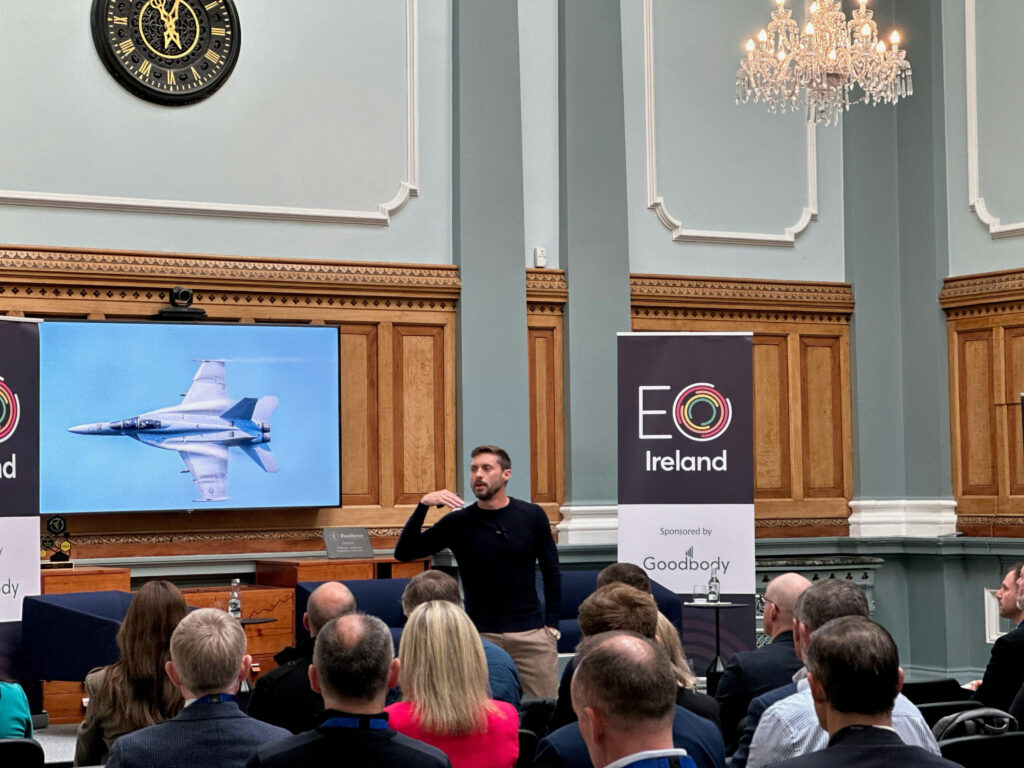When I speak on wealth, as I had the opportunity to do this week at the iconic Irish Stock Exchange, one of the most common questions people want to know is:
“How much is enough?”
It seems like a simple enough question, but the answer isn’t quite so obvious.
That’s because this isn’t the real question.
If we want better answers, we must learn to ask better questions.
When people wonder how much money is enough, the question they are really asking is, “How much money do I need to finally feel safe?”
This is where things get really interesting.
The answer, perhaps not surprisingly, is more.

More specifically, data shows that regardless of their net worth, people believe that in order to feel safe, they need between two to ten times more than they have now.
I don’t know about you, but I find that to be quite depressing.
Does this mean that we are doomed to the hedonic treadmill, always striving but never reaching the finish line?
You might interpret this data to mean that money cannot make us feel safe.
And that may be partially true.
Or, perhaps, is it because we aren’t taught how to effectively solve for this outcome?
Humans are notoriously bad at knowing what we want.
We are even worse at effectively matching problems and solutions.
If our goal is to create safety, here’s some good news:
It can be a lot simpler than you think.
When it comes to creating safety, the goal is to replace active income with income generated by our investments as quickly as possible.
This holy grail of investing is passive income.
When most founders start their companies, they dream of living a life of freedom.
I know I did.
True freedom is when our time is no longer required to generate income. When we divorce time from money, we gift ourselves the ultimate choice over how we spend our most precious resource: time.
I call this reaching escape velocity.
It makes sense, then, that as we become more successful and income starts to exceed expenses, we would take the straightest path toward passive income replacing active income and doing our best to engineer out as much risk as possible.
Shockingly, almost no one does this.
Instead, we take our hard-earned money and start making exotic, risky investments because we are taught that we need more.
We aren’t taught how to turn our money into safety, so we stay on the hedonic treadmill.
One of my favorite podcast questions is, “If you could go back in time, what advice would you give to yourself ten years ago?”
Here is mine:
You only need between $5 and $7 million to generate $20,000 monthly in essentially risk-free passive income.
The first goal is to cover essential spending (mortgage/rent, groceries, etc), and then you can work on non-essential (vacations, toys, luxuries).
Lest you think this is some miracle get-rich-quick scheme requiring secret insider knowledge, let me assure you that this is quite accessible to all of us.
It doesn’t require crypto trading bots, rental real estate, AirBnB arbitrage or drop shipping.
It certainly doesn’t involve buying laundromats.
The reality is that while your favorite guru may disagree, there is nothing passive about those activities.
I’m talking about the most boring investment there is: fixed income.
Things like treasuries and municipal bonds.
It sounds crazy, I know. Ten years ago, I would have laughed off the idea of fixed income as an asset class for old people.
I thought I needed more.
So I swung for the fences. I invested in startups, crypto, stock options, and all kinds of crazy deals because I was trying to maximize my returns and grow my portfolio as quickly as possible.
I didn’t realize every time one of those risky investments didn’t pan out, I was setting myself back from true freedom.
The beauty of this system is its simplicity. It seems almost too good to be true.
Start a business. Generate income. Take that income and invest it as safely as possible to replace active income with passive income. Reach financial freedom.
The only variable becomes time. To pull the timeline forward, focus on growing the business (and/or reducing expenses).
And whatever you do, don’t get distracted by shiny objects.
Think of every dollar as fuel in the tank in the race to financial freedom, except the finish line in this race is variable. Every time you lose a dollar, the finish line moves further away. As you fill-up the tank, the finish line inches closer.
So how much is enough?
It turns out the answer may not be more after all.
To running your own race,
Mb